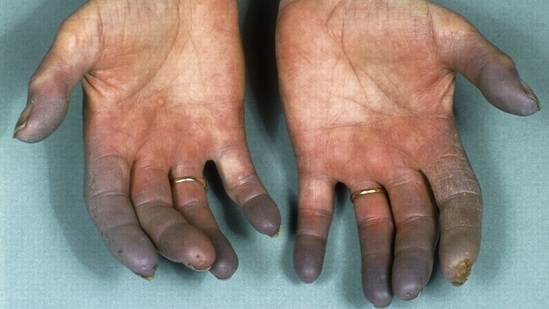The weird horrible story of George Boyer amputation
George Boyer was born in 1882 and lived a relatively normal life until he was 28 years old. It was then that he was diagnosed with a rare condition known as Buerger's disease, which causes inflammation and blood clots in the small blood vessels of the arms and legs. Despite treatment, Boyer's condition worsened and he began experiencing severe pain and weakness in his left leg.
As the disease progressed, Boyer's left foot and ankle began to turn black and gangrenous, and doctors advised him that amputation was the only option to save his life. Boyer, who was a devoted husband and father, was understandably reluctant to undergo such a drastic procedure. However, knowing that he would otherwise die from his condition, he ultimately decided to go through with the amputation.
The surgery was a success, and Boyer was fitted with a prosthetic leg. Despite the initial challenges he faced in adjusting to his new limb and learning to walk again, he was determined to not let his amputation define him. He found ways to continue working, playing with his children, and enjoying his hobbies. He even took up woodworking as a hobby, creating intricate wooden sculptures and furniture.
Boyer's story was not just one of physical struggle, but also of mental and emotional resilience. He never let his amputation defeat him and always found ways to live his life to the fullest. He was an inspiration to those around him, who saw how he never gave up, even in the face of adversity.
As years went by, George Boyer's story became well known in his community, and he became a symbol of hope and determination. He was a reminder that no matter how difficult life may seem, there is always a way to overcome it. Boyer passed away in 1968, but his legacy lives on through the many people he inspired during his lifetime.
In conclusion, the story of George Boyer is an inspiring tale of how one man faced a life-altering event with determination and never gave up. His resilience, courage, and positive attitude serve as a reminder that we can all overcome our challenges and live fulfilling lives.

Buerger's disease, also known as thromboangiitis obliterans, is a rare condition that affects the small blood vessels of the arms and legs. It is most commonly seen in young men who are heavy smokers or have a history of heavy tobacco use. The disease causes inflammation and blood clots in the blood vessels, which can lead to blocked blood flow and damage to the tissue in the affected limbs.
Symptoms of Buerger's disease typically include pain and cramping in the affected limb, as well as numbness and weakness. As the disease progresses, the affected limb may turn cold and blue, and the skin may start to turn black and gangrenous. In severe cases, amputation may be necessary to prevent the spread of gangrene and save the patient's life.
The cause of Buerger's disease is not fully understood, but it is believed to be related to the chronic inflammation caused by smoking. The disease is most common in men under the age of 40 who have a history of heavy smoking, but it can also occur in women and non-smokers.
There is no specific cure for Buerger's disease, and treatment is focused on managing symptoms and slowing the progression of the disease. This may include medications to reduce inflammation and blood clots, as well as lifestyle changes such as quitting smoking and managing stress. In advanced cases, surgery such as amputation may be necessary to save the patient's life.
It's important to note that Buerger's disease is a rare condition, and many people who smoke will never develop it. However, quitting smoking is still the best way to reduce the risk of developing the disease and many other health problems.


